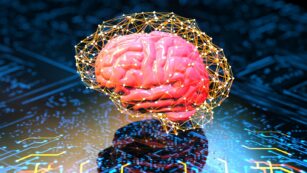
Have you ever pondered the fascinating concept of Levinthal’s Paradox? As I delved into the intricacies of this intriguing phenomenon, I uncovered a perplexing conundrum that challenges our understanding of protein folding. Levinthal’s Paradox poses a thought-provoking question: how do proteins fold into their precise three-dimensional structures so rapidly, considering the astronomical number of possible configurations they could adopt?
Exploring Levinthal’s Paradox offers a unique insight into the complexity of biological systems and the remarkable efficiency of molecular processes. As I navigate through the layers of this enigma, I aim to shed light on the mechanisms behind protein folding and the implications it holds for fields ranging from biochemistry to artificial intelligence.
Levinthal’s Paradox
What Is Levinthal’s Paradox?
Levinthal’s Paradox is a perplexing phenomenon that highlights the rapidity with which proteins achieve their precise three-dimensional structures. This concept raises the question of how proteins navigate through numerous possible configurations to fold correctly in such a short timeframe. It’s fascinating to ponder the efficiency of biological systems in accomplishing this complex task without getting lost in the vast array of structural possibilities.
The Historical Context and Discovery
In the historical realm of scientific discovery, Levinthal’s Paradox made its mark as a thought-provoking puzzle. Coined by the biochemist Cyrus Levinthal in the 1960s, this paradox shed light on the intricacies of protein folding. Levinthal’s insight challenged traditional assumptions about how proteins fold and set the stage for further exploration into the mechanisms governing this fundamental biological process.
Challenges Posed by Levinthal’s Paradox
Implications for Protein Folding
 Understanding Levinthal’s Paradox has profound implications for the field of protein folding. The paradox highlights the incredibly rapid and precise nature of protein folding processes. Despite the immense number of possible configurations, proteins fold correctly in a fraction of a second. This challenges our understanding of how biological systems achieve such efficient and accurate folding, pushing us to delve deeper into the intricacies of molecular interactions and structural dynamics within cells.
Understanding Levinthal’s Paradox has profound implications for the field of protein folding. The paradox highlights the incredibly rapid and precise nature of protein folding processes. Despite the immense number of possible configurations, proteins fold correctly in a fraction of a second. This challenges our understanding of how biological systems achieve such efficient and accurate folding, pushing us to delve deeper into the intricacies of molecular interactions and structural dynamics within cells.
Challenges for Computational Biology
Levinthal’s Paradox poses significant challenges for computational biology. Simulating the process of protein folding computationally is a daunting task due to the vast conformational space that proteins can explore. Traditional computational methods struggle to accurately predict the folding pathways of proteins within a reasonable timeframe. Addressing these challenges requires the development of innovative algorithms and approaches that can efficiently navigate the complex landscape of protein folding.
Current Theories Addressing Levinthal’s Paradox
Funnel-Shaped Energy Landscapes
 In protein folding, one prevailing theory addressing Levinthal’s Paradox is the concept of funnel-shaped energy landscapes. These landscapes suggest that proteins do not randomly sample all possible conformations during folding. Instead, they navigate a funnel-like energy landscape, where the energy decreases as the protein approaches its native state.
In protein folding, one prevailing theory addressing Levinthal’s Paradox is the concept of funnel-shaped energy landscapes. These landscapes suggest that proteins do not randomly sample all possible conformations during folding. Instead, they navigate a funnel-like energy landscape, where the energy decreases as the protein approaches its native state.
Kinetic Accessibility
Another significant theory in addressing Levinthal’s Paradox is kinetic accessibility. This theory emphasizes the role of kinetic factors in guiding the protein folding process. Rather than considering all possible conformations simultaneously, proteins overcome energy barriers and transition states to reach their folded state through a series of intermediate steps. Kinetic accessibility highlights the importance of specific pathways and interactions that facilitate the rapid and accurate folding of proteins, shedding light on the dynamic nature of protein folding kinetics.
Recent Advances in Computational Methods
Molecular Dynamics Simulations
 In recent years, significant progress has been made in understanding protein folding dynamics through Molecular Dynamics (MD) simulations. These computational techniques allow researchers, like me, to simulate the behavior of proteins at the atomic level, providing valuable insights into the folding process. By tracking the movements of individual atoms over time, MD simulations help elucidate the intricate pathways that proteins navigate during folding.
In recent years, significant progress has been made in understanding protein folding dynamics through Molecular Dynamics (MD) simulations. These computational techniques allow researchers, like me, to simulate the behavior of proteins at the atomic level, providing valuable insights into the folding process. By tracking the movements of individual atoms over time, MD simulations help elucidate the intricate pathways that proteins navigate during folding.
Machine Learning Approaches
Machine Learning (ML) has emerged as a powerful tool in deciphering the complexities of protein folding. As a researcher, I have witnessed the impact of ML algorithms in predicting protein structures and folding mechanisms with remarkable accuracy. By analyzing vast amounts of data, ML models can learn the structural rules governing protein folding and make predictions based on this knowledge.
